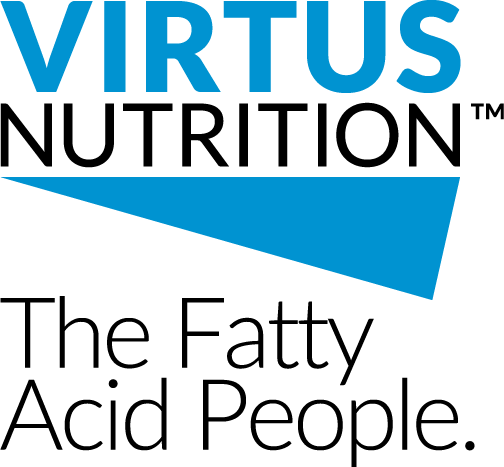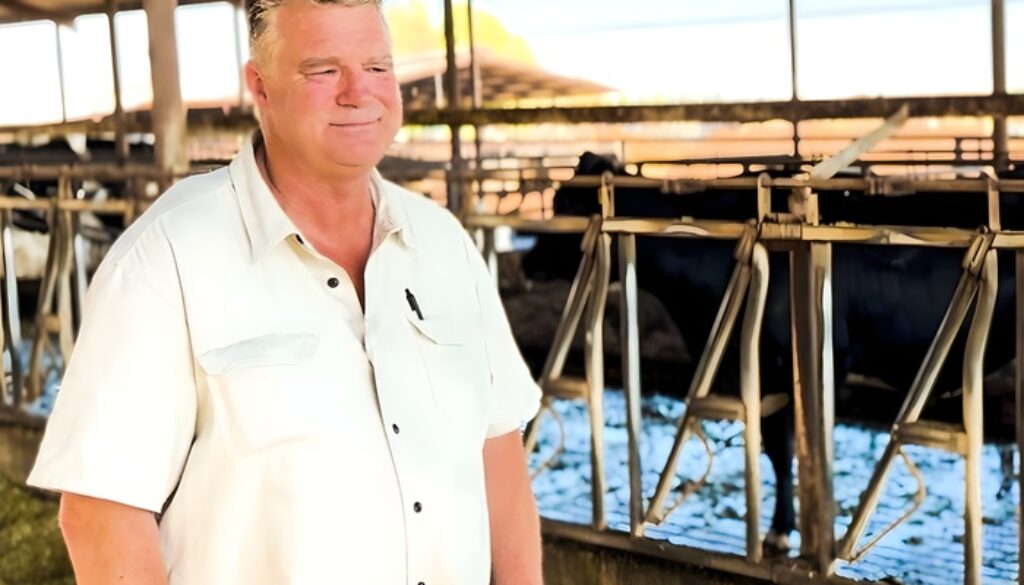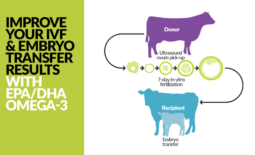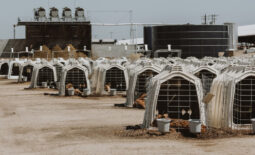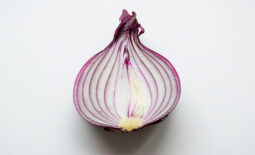Implementing a Fertility First Approach at Rocking S Dairy
As seen in Progressive Dairy
Breed for fertility, feed for fertility, manage for fertility…this phrase encapsulates the approach Siebren Jacobi has taken to capture greater herd performance and profitability at Rocking S Dairy in Modesto, California. As herd manager for the past twelve years, Jacobi has clearly defined goals that truly guide his day-to-day decisions, including building a herd with greater longevity, reducing cull rate to 33%, maintaining a 30%+ pregnancy rate, and consistently achieving 100 pounds of energy-corrected milk. While he hasn’t hit the mark yet on all these goals, his persistence and focus on the long-term outcomes is certainly something for us to learn from.
Born and raised in the Netherlands, Jacobi first spent a year in New Zealand learning their ways of dairying before landing in California thirty-two years ago. No doubt those early years impacted his view of dairy husbandry, helping to shape his continuous focus on improving the health and reproductive performance through both genetics and management. “It starts and stops with a healthy cow,” said Jacobi as he described the many tools that he’s employed to move Rocking S Dairy toward their goals. “We’re constantly looking to do anything possible to keep them as healthy as possible,” he continued.
Health Through Genetics
Rocking S Dairy has seen the impact that focusing genetically on fertility and health can have over the years. Jacobi was an early adopter of genomic testing for health traits, having started with Clarifide Plus from Zoetis in 2013. The use of genomic testing has helped him think differently about his breeding program and bull list. ‘We focus heavy on fertility, and a little less on milk, as that seems to be the trade-off regarding genetic selection,’ said Jacobi. Although their milk flow has certainly not been hindered much, averaging 32,000 pounds of ECM on their all-Holstein herd. A heavy focus on health traits is also key to his genetic strategy. ‘I figure a healthy cow gives more milk, and more older cows give more milk than first lactation animals,’ explained Jacobi.
In layman’s terms, Jacobi describes his bull selection protocol as including the fertility gene, the health gene, the healthy calf gene, the productivity gene and the makes-good-heifers gene. Technically, this includes the following genomic traits: cow conception rate (CCR) or heifer conception rate (HCR) >1, genomic somatic cell score (GSCS) <2.8, combined fat and protein (CFP) at 150+, calf wellness (CW$) at 0+, and productive life (PL) at 6+.
Genomic somatic cell score is a good example of Jacobi’s focused genetic selection translating to improvements in health. Since they began genomic testing ten years ago, GSCS has dropped from 3.0 in 2013 to 2.69 in 2023, which is significantly greater genetic progress than the average genomic tested herd (figure 1). To gut check the correlation between genetic somatic cell score and bulk tank SCC, Jacobi mined the data in Dairy Comp, which showed that the cows in his herd that had a GSCS<2.7 had an average bulk tank SCC of 97,000 vs. the cows with GSCS>2.9 had a bulk tank SCC average of 286,000. According to the Compeer Financial/Zoetis study on the key factors that drive profitability of dairy farms, they found that for every 100,000-cell change, there’s 6.1 pounds of milk either gained or lost. Not to mention, the cost that higher levels of sub-clinical mastitis has on reproductive performance, and consequently driving up replacement costs.
Feed the Need
Jacobi’s nutritional approach follows his genetic strategy…feeding for healthy and fertile cows. Jacobi believes in ‘feeding the need’ and for that reason, he has included omega-3 fatty acids into the diets for the past several years. ‘Put your money where your focus is,’ said Jacobi. ‘That’s where EPA/DHA omega-3 fits in as it promotes fertility and retention of the pregnancy, as well as takes the inflammation down for better transitions.’ A look back at his conception rate trends over the past 5 years shows his sure and steady improvements, with overall conception rate at 57% for the past 12 months on an all Holstein herd (10+ points higher than just five years ago).
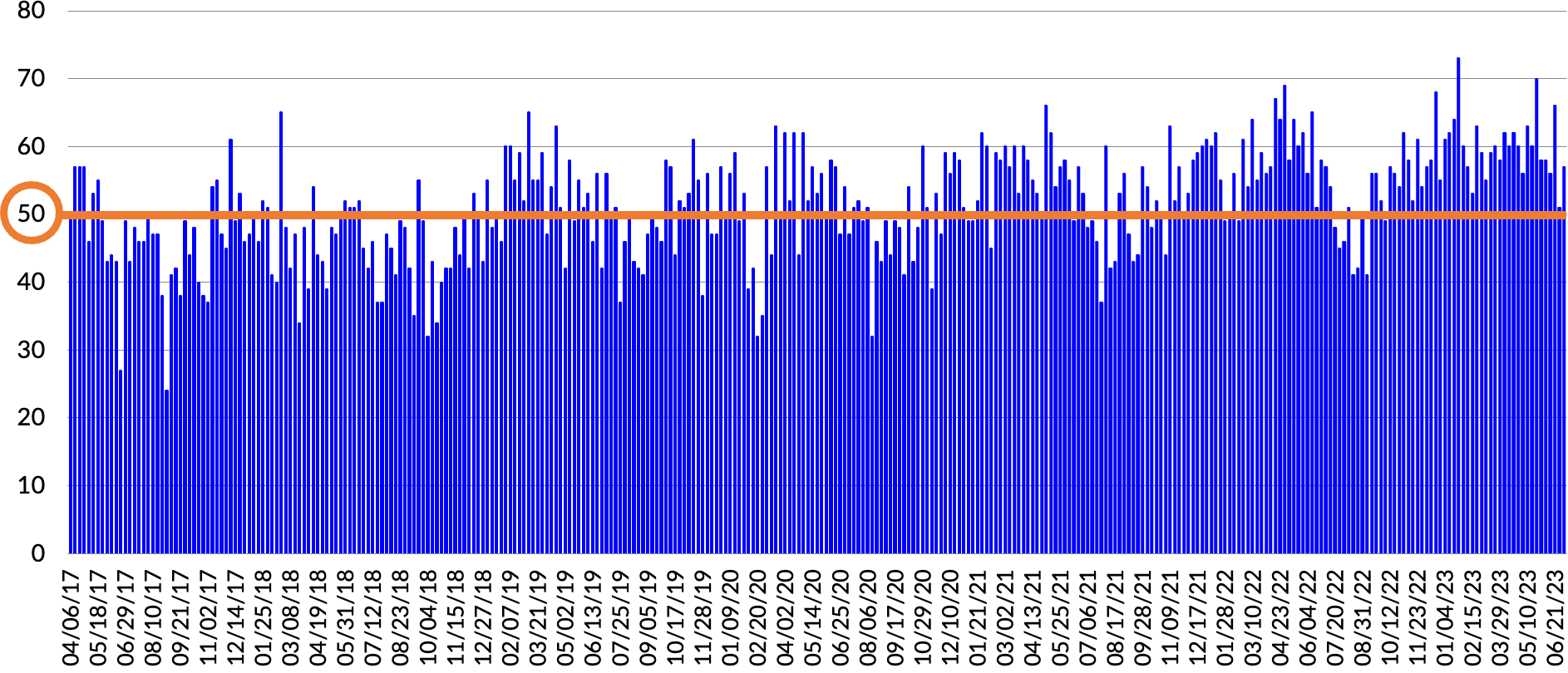
As the manager, and not owner, of Rocking S Dairy, Jacobi is constantly sharpening his pencil to justify the cost of any nutritional investment to ensure the returns are there. While feed costs have been under great scrutiny (for good reason…hello to the era of high feed costs), Jacobi has spent considerable time in spreadsheets to truly understand the cost of not getting animals pregnant the first time. In 2019, he went through one such math exercise when the reproductive performance in the virgin heifers continued to lag significantly behind performance in the lactating herd. Jacobi and his team implemented a ‘repro pack’ to the breeding age heifers to see if better addressing their nutrient requirements for EPA/DHA and B vitamins, as they had in the lactating rations, could make a difference for the virgin heifers as well. They went from averaging mid 40-s on conception rate to averaging 53 for the past 24 months since making that change. After seeing the results, Jacobi was curious if the reproductive improvements from feeding the repro pack were the same or different across animals with higher or lower genomic heifer conception rates (GHCR). With the help of Zoetis’ analysis, the trends analyzed showed similar improvements regardless of genomic HCR status (figure 3).
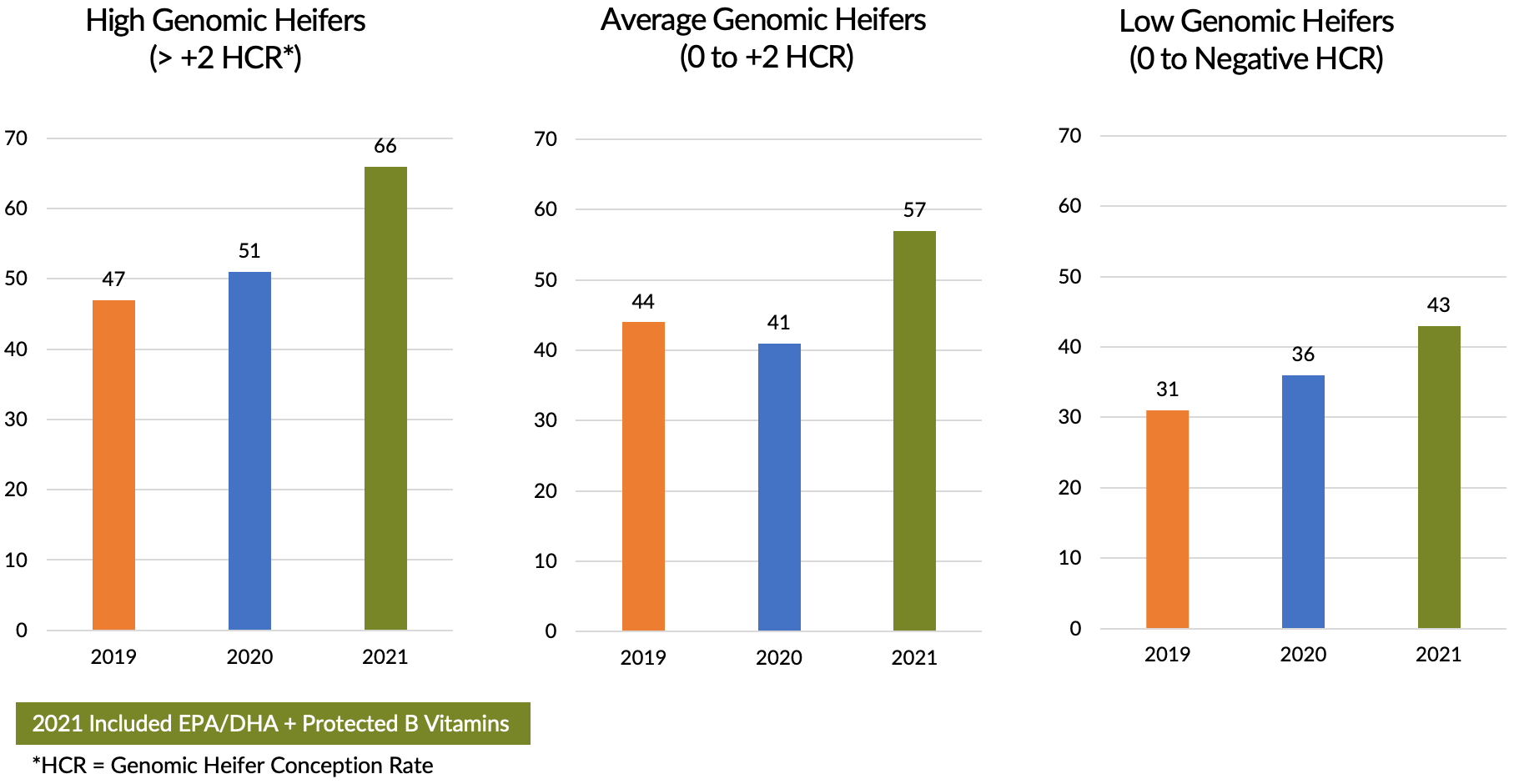
What’s Next
As Jacobi looks to what’s next in managing for greater health and reproduction, he continues to back up to the younger animals, with calves in focus for 2024. “Getting more ‘platinum heifers’ into the barn is what it’s all about,” said Jacobi, as he gives Dr. Gavin Staley credit for coining the term. While they added some shades to heifer pens this past year, they will continue working to make sure all heifers from six months through breeding have both shades and soakers. “Don’t overstock the heifers and feed what they need…all the basics will be revisited to give each animal the chance to be a 5th lactation cow.”
As seen in Progressive Dairy
Breed for fertility, feed for fertility, manage for fertility…this phrase encapsulates the approach Siebren Jacobi has taken to capture greater herd performance and profitability at Rocking S Dairy in Modesto, California. As herd manager for the past twelve years, Jacobi has clearly defined goals that truly guide his day-to-day decisions, including building a herd with greater longevity, reducing cull rate to 33%, maintaining a 30%+ pregnancy rate, and consistently achieving 100 pounds of energy-corrected milk. While he hasn’t hit the mark yet on all these goals, his persistence and focus on the long-term outcomes is certainly something for us to learn from.
Born and raised in the Netherlands, Jacobi first spent a year in New Zealand learning their ways of dairying before landing in California thirty-two years ago. No doubt those early years impacted his view of dairy husbandry, helping to shape his continuous focus on improving the health and reproductive performance through both genetics and management. “It starts and stops with a healthy cow,” said Jacobi as he described the many tools that he’s employed to move Rocking S Dairy toward their goals. “We’re constantly looking to do anything possible to keep them as healthy as possible,” he continued.
Health Through Genetics
Rocking S Dairy has seen the impact that focusing genetically on fertility and health can have over the years. Jacobi was an early adopter of genomic testing for health traits, having started with Clarifide Plus from Zoetis in 2013. The use of genomic testing has helped him think differently about his breeding program and bull list. ‘We focus heavy on fertility, and a little less on milk, as that seems to be the trade-off regarding genetic selection,’ said Jacobi. Although their milk flow has certainly not been hindered much, averaging 32,000 pounds of ECM on their all-Holstein herd. A heavy focus on health traits is also key to his genetic strategy. ‘I figure a healthy cow gives more milk, and more older cows give more milk than first lactation animals,’ explained Jacobi.
In layman’s terms, Jacobi describes his bull selection protocol as including the fertility gene, the health gene, the healthy calf gene, the productivity gene and the makes-good-heifers gene. Technically, this includes the following genomic traits: cow conception rate (CCR) or heifer conception rate (HCR) >1, genomic somatic cell score (GSCS) <2.8, combined fat and protein (CFP) at 150+, calf wellness (CW$) at 0+, and productive life (PL) at 6+.
Genomic somatic cell score is a good example of Jacobi’s focused genetic selection translating to improvements in health. Since they began genomic testing ten years ago, GSCS has dropped from 3.0 in 2013 to 2.69 in 2023, which is significantly greater genetic progress than the average genomic tested herd (figure 1). To gut check the correlation between genetic somatic cell score and bulk tank SCC, Jacobi mined the data in Dairy Comp, which showed that the cows in his herd that had a GSCS<2.7 had an average bulk tank SCC of 97,000 vs. the cows with GSCS>2.9 had a bulk tank SCC average of 286,000. According to the Compeer Financial/Zoetis study on the key factors that drive profitability of dairy farms, they found that for every 100,000-cell change, there’s 6.1 pounds of milk either gained or lost. Not to mention, the cost that higher levels of sub-clinical mastitis has on reproductive performance, and consequently driving up replacement costs.
Feed the Need
Jacobi’s nutritional approach follows his genetic strategy…feeding for healthy and fertile cows. Jacobi believes in ‘feeding the need’ and for that reason, he has included omega-3 fatty acids into the diets for the past several years. ‘Put your money where your focus is,’ said Jacobi. ‘That’s where EPA/DHA omega-3 fits in as it promotes fertility and retention of the pregnancy, as well as takes the inflammation down for better transitions.’ A look back at his conception rate trends over the past 5 years shows his sure and steady improvements, with overall conception rate at 57% for the past 12 months on an all Holstein herd (10+ points higher than just five years ago).

As the manager, and not owner, of Rocking S Dairy, Jacobi is constantly sharpening his pencil to justify the cost of any nutritional investment to ensure the returns are there. While feed costs have been under great scrutiny (for good reason…hello to the era of high feed costs), Jacobi has spent considerable time in spreadsheets to truly understand the cost of not getting animals pregnant the first time. In 2019, he went through one such math exercise when the reproductive performance in the virgin heifers continued to lag significantly behind performance in the lactating herd. Jacobi and his team implemented a ‘repro pack’ to the breeding age heifers to see if better addressing their nutrient requirements for EPA/DHA and B vitamins, as they had in the lactating rations, could make a difference for the virgin heifers as well. They went from averaging mid 40-s on conception rate to averaging 53 for the past 24 months since making that change. After seeing the results, Jacobi was curious if the reproductive improvements from feeding the repro pack were the same or different across animals with higher or lower genomic heifer conception rates (GHCR). With the help of Zoetis’ analysis, the trends analyzed showed similar improvements regardless of genomic HCR status (figure 3).

What’s Next
As Jacobi looks to what’s next in managing for greater health and reproduction, he continues to back up to the younger animals, with calves in focus for 2024. “Getting more ‘platinum heifers’ into the barn is what it’s all about,” said Jacobi, as he gives Dr. Gavin Staley credit for coining the term. While they added some shades to heifer pens this past year, they will continue working to make sure all heifers from six months through breeding have both shades and soakers. “Don’t overstock the heifers and feed what they need…all the basics will be revisited to give each animal the chance to be a 5th lactation cow.”
